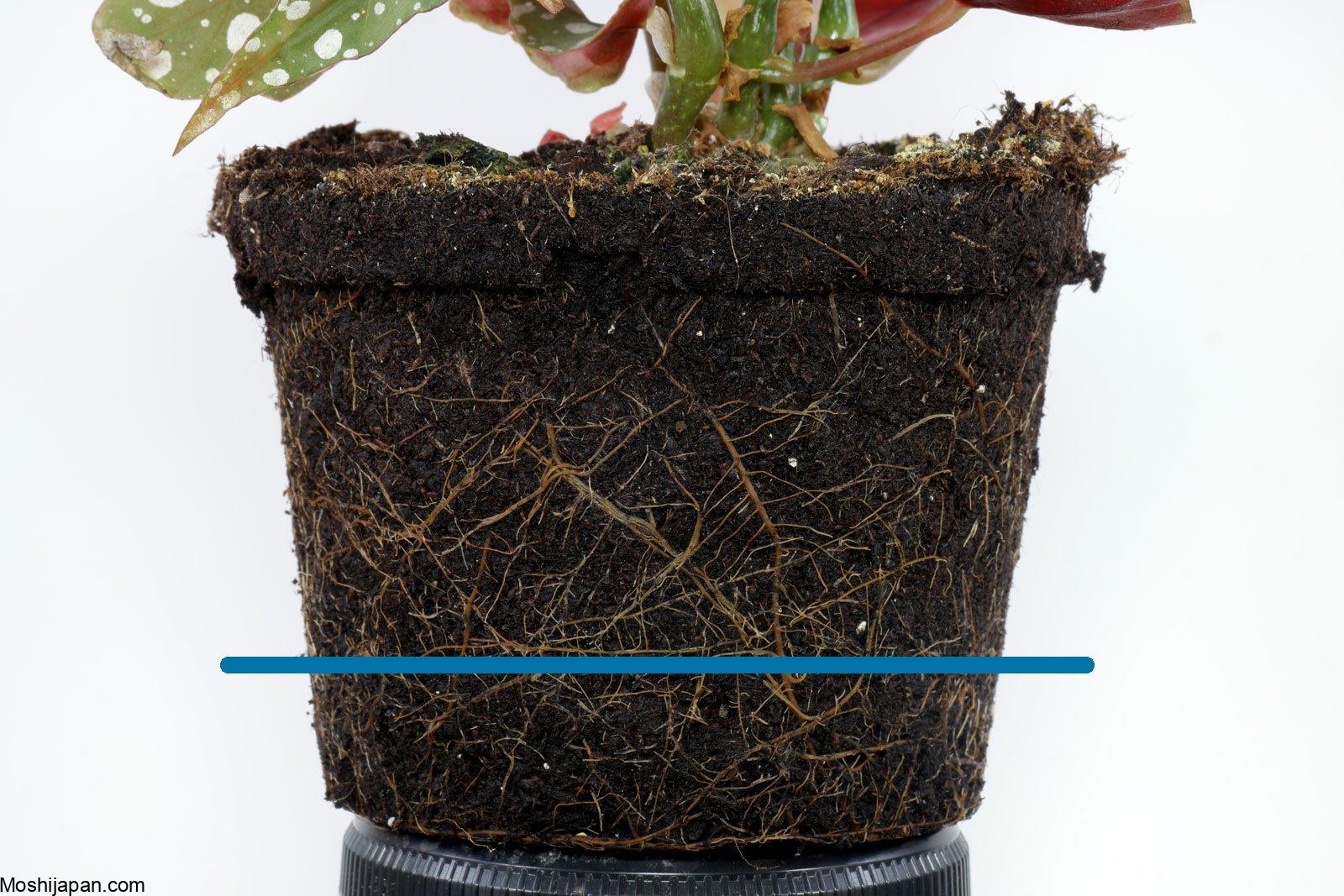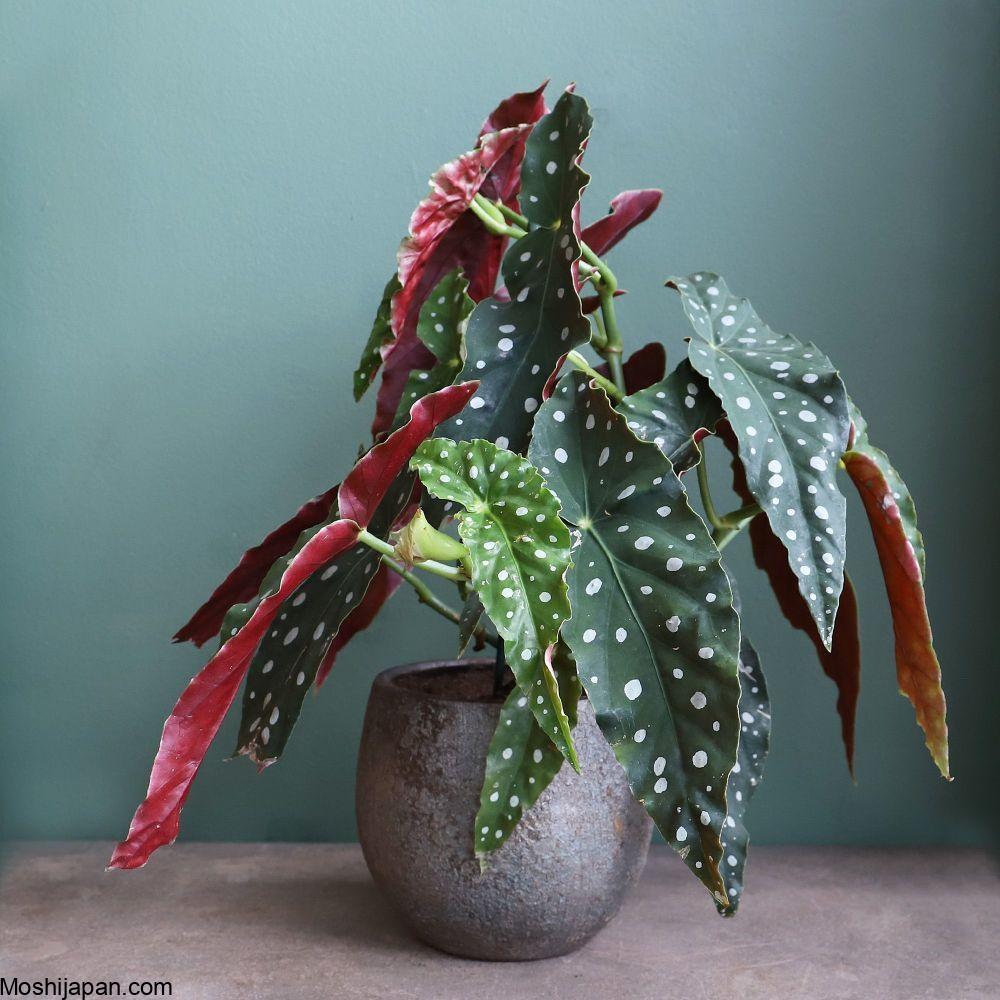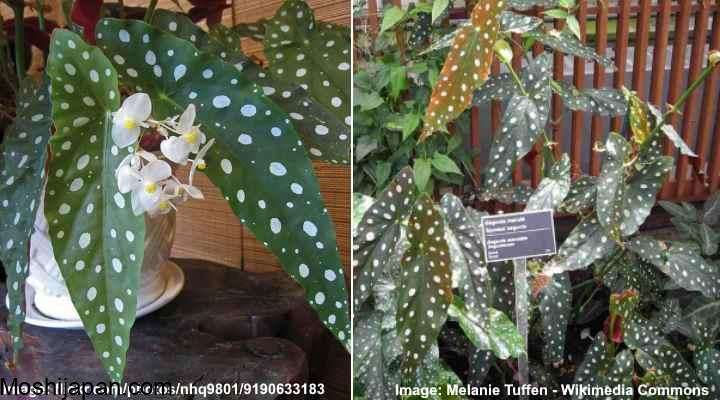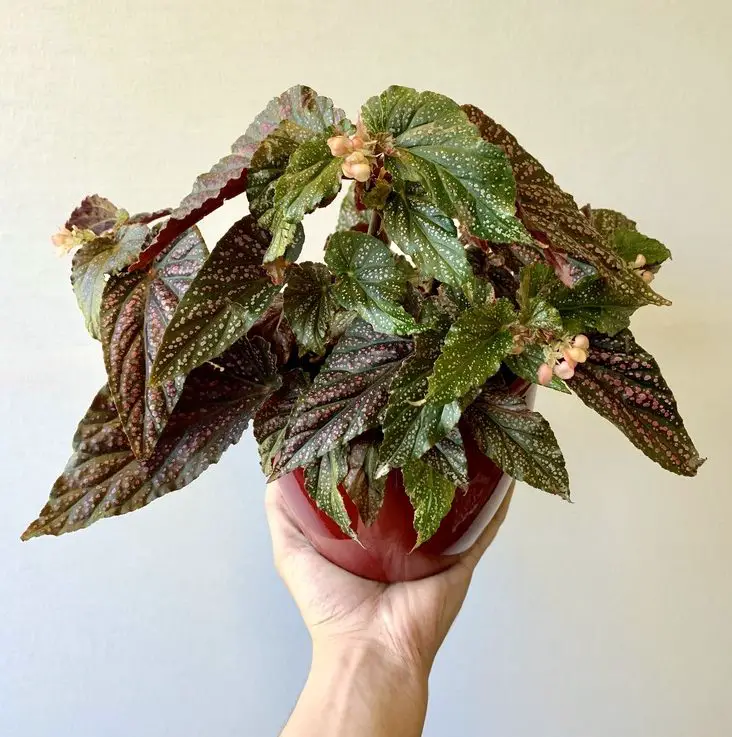Begonia maculata: How to Grow the Polka Dot Begonia
If you’re looking to cultivate a stunning houseplant that’s not only easy on the eyes but also easy to care for, the Begonia maculata, commonly known as the Polka Dot Begonia, might just be the perfect addition to your indoor garden. In this comprehensive guide, we’ll walk you through the essential steps to help you successfully grow and care for the Begonia maculata. From understanding its unique characteristics to providing the ideal environment and maintenance, we’ve got you covered. Let’s dive in!
Understanding the Begonia maculata

The Begonia maculata is a mesmerizing houseplant known for its eye-catching leaves adorned with white or silver polka dots, reminiscent of a beautiful starry night. Native to Brazil, this begonia is a tropical delight that brings an exotic touch to your home. Its scientific name, Begonia maculata Wightii, hints at its elegance.
Key Features:
- Polka-Dotted Leaves: The standout feature of this begonia is its dark green leaves speckled with white or silver spots. These unique patterns make it a highly sought-after plant for interior decoration.
- Cane-Like Growth: The Begonia maculata grows upright with a cane-like stem structure, making it ideal for those looking for a tall, decorative plant.
- Delicate Flowers: While the primary attraction is its leaves, this begonia also produces small, delicate pink or white flowers, adding to its overall charm.
Creating the Ideal Environment

To thrive, the Begonia maculata requires specific conditions that mimic its native habitat. Here’s how to create the perfect environment for this stunning houseplant:
1. Light:
The Polka Dot Begonia thrives in bright, indirect light. Avoid exposing it to direct sunlight, as this can scorch its delicate leaves. Place it near a north or east-facing window for optimal growth.
2. Temperature and Humidity:
Maintain a consistent temperature between 65°F to 75°F (18°C to 24°C) and high humidity levels. Using a humidifier or placing a tray of water near the plant can help create the right moisture level.
3. Soil:
Use well-draining, peat-based soil to ensure proper water retention and aeration. A mixture of peat moss and perlite works well for the Begonia maculata.
4. Watering:
Keep the soil consistently moist but not waterlogged. Water the plant when the top inch of soil feels dry. It’s essential to prevent overwatering, as this can lead to root rot.
Care and Maintenance

Caring for your Begonia maculata involves a few essential tasks to keep it thriving and looking its best:
1. Pruning:
Regularly prune any yellowing or damaged leaves to encourage healthy growth and maintain the plant’s appearance.
2. Fertilizing:
Feed your Polka Dot Begonia with a balanced, water-soluble fertilizer every 4-6 weeks during the growing season (spring and summer). Avoid fertilizing during the dormant period (fall and winter).
3. Repotting:
As your begonia grows, it may outgrow its current pot. Repot it into a slightly larger container in the spring to provide more space for the roots to spread.
4. Support:
Given the cane-like structure, provide stakes or a trellis for support as the plant grows taller, preventing it from bending or breaking.
Common Issues and Troubleshooting

Even with the best care, issues may arise when growing the Begonia maculata. Here are some common problems and how to address them:
1. Yellowing Leaves:
Yellow leaves are often a sign of overwatering. Ensure the soil is well-draining and adjust your watering schedule.
2. Leggy Growth:
If your begonia becomes leggy and loses its bushy appearance, it may need more light. Move it to a brighter location.
3. Pest Infestations:
Keep an eye out for common pests like mealybugs and spider mites. If you notice an infestation, treat your plant with neem oil or insecticidal soap.
4. Leaf Drop:
Sudden leaf drop can be due to temperature fluctuations or drafts. Maintain a consistent temperature and protect your plant from cold drafts.
Propagating the Begonia maculata

If you want to expand your Polka Dot Begonia collection or share it with friends, propagation is a great option. You can propagate the Begonia maculata through stem cuttings. Here’s how:
- Select a healthy stem with a few leaves and cut it just below a leaf node.
- Let the cutting air dry for a few hours to form a callus.
- Plant the cutting in a small pot with well-draining soil.
- Keep the soil consistently moist and place the cutting in a warm, bright location.
- After a few weeks, you should notice new growth, indicating successful propagation.
Frequently Asked Questions (FAQ)
Q1: Can I grow the Begonia maculata outdoors?
A1: While the Begonia maculata is primarily grown as an indoor plant, it can thrive in outdoor gardens in areas with a mild, tropical climate. However, it should be placed in a shaded or semi-shaded spot to avoid direct sunlight.
Q2: Is the Begonia maculata toxic to pets?
A2: Yes, the Begonia maculata is toxic to both cats and dogs. Keep it out of reach of your furry friends to ensure their safety.
Q3: How often should I fertilize my Polka Dot Begonia?
A3: Fertilize your Begonia maculata every 4-6 weeks during the growing season (spring and summer). Avoid fertilizing during the dormant period in the fall and winter.
Q4: Can I place my Begonia maculata in a bathroom with high humidity?
A4: Yes, a bathroom with high humidity can be an excellent location for your Begonia maculata, as long as it receives bright, indirect light. Just ensure there’s enough air circulation to prevent mold and mildew.
tag
- chicken feed
- how to Keep Chickens Off Your Porch
- How to grow oyster mushrooms at home
- Growing Kale in Pots



0 Comments